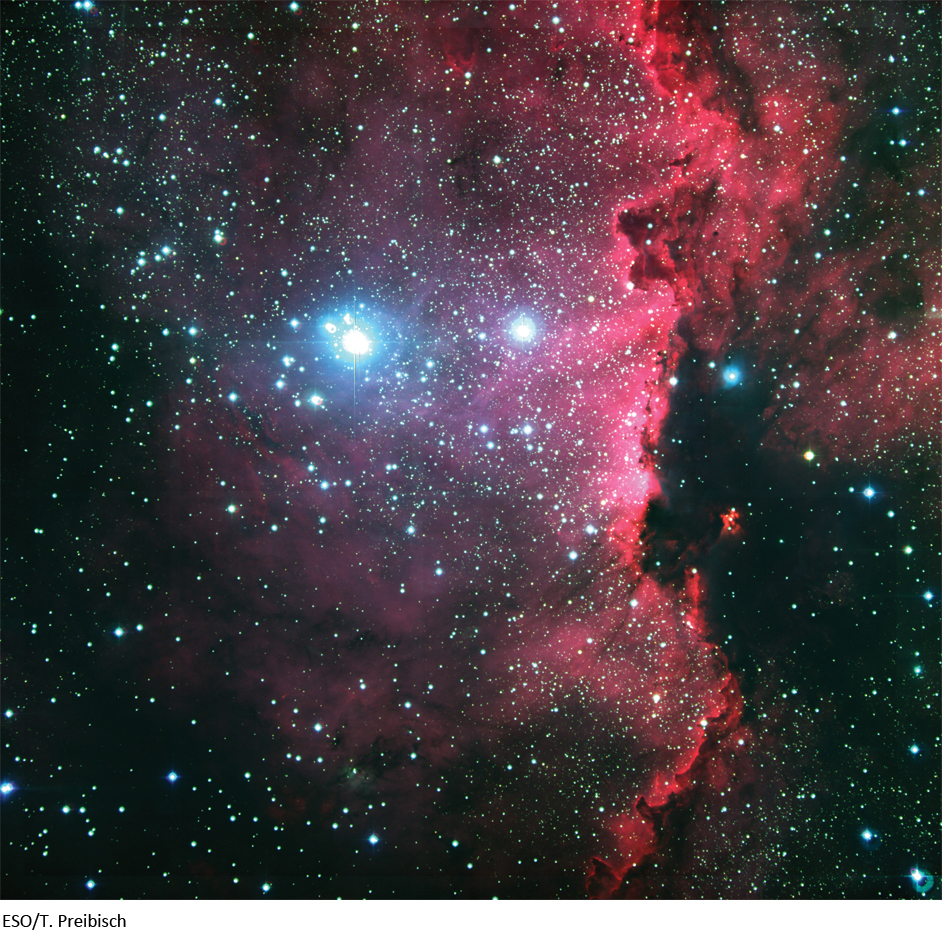251

Inferring Patterns in Star Life Cycles
CHAPTER LEARNING OBJECTIVES
By reading the sections of this chapter, you will learn:
- 11-1 Stars form from the gravitational collapse of immense clouds of interstellar gas and dust
- 11-2 Most stars shine throughout their lives by converting hydrogen into helium through nuclear fusion
- 11-3 Careful observations of star clusters provide insight into how a star’s mass influences how stars change over time
- 11-4 Stars slowly become red giants
- 11-5 Low-mass stars pulsate and eject planetary nebulae, leaving behind a white dwarf at the end of their life cycles
252
When looking into the night sky, one naturally wonders if the stars overhead are the same stars that dotted the skies of our grandparents and that of our great-great-great grandparents. Indeed, the stars that illuminate our nights seem eternal and unchanging. But this permanence is an illusion. Each of the stars visible to the naked eye shines due to thermonuclear reactions and has only a finite amount of fuel available for these reactions. Hence, stars cannot last forever: They form from material in interstellar space, evolve over millions or billions of years, and eventually die. In this chapter, our concern is with how stars form and change over their life cycles.
Observations across the sky reveal that stars form within cold, dark clouds of gas and dust that are scattered abundantly throughout our Galaxy. One such cloud appears as a dark area on the far right-hand side of the photograph opening this chapter. Perhaps a dark cloud like this encounters pressure from one of our Galaxy’s spinning arms or an exploding star detonates nearby. From the shock of events like these, the cloud begins to contract under the pull of gravity, forming protostars—the fragments that will one day become stars. The physical process underlying this is that as a protostar develops, its internal pressure builds and its temperature rises. In time, nuclear fusion begins, and a shining star is born. The hottest, bluest, and brightest young stars, like those in the photo, emit ultraviolet light that excites atoms in the surrounding interstellar gas. The result is a beautiful glowing nebula, which typically has the red color characteristic of excited hydrogen (as shown in the photograph). As we will see, stars mature and grow old and their rate of aging is directly related to their mass. In this chapter, we will focus on what happens to the most common of stars—stars like our own Sun. In the following chapter, we will find that the largest of stars even blow themselves apart in death throes that enrich interstellar space with the material for future generations of stars. Thus, like the mythical phoenix, all new stars arise from the ashes of the old.